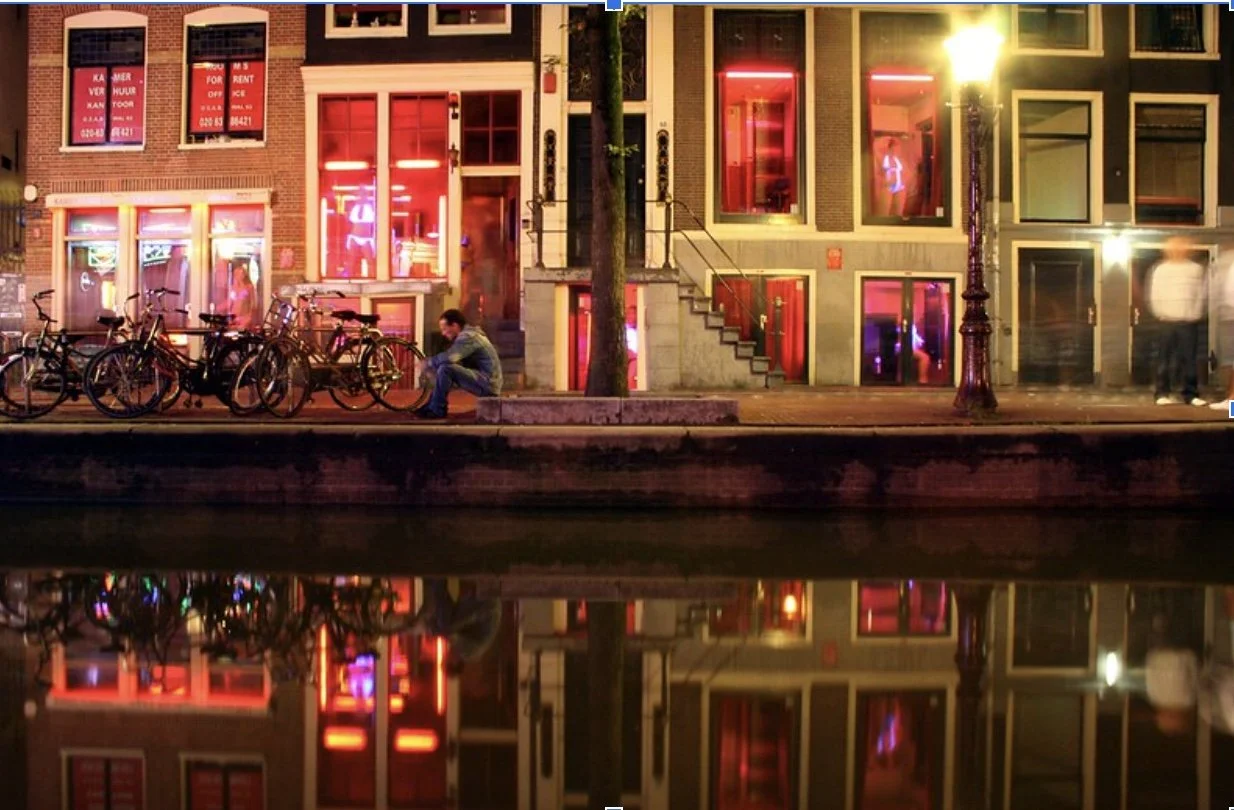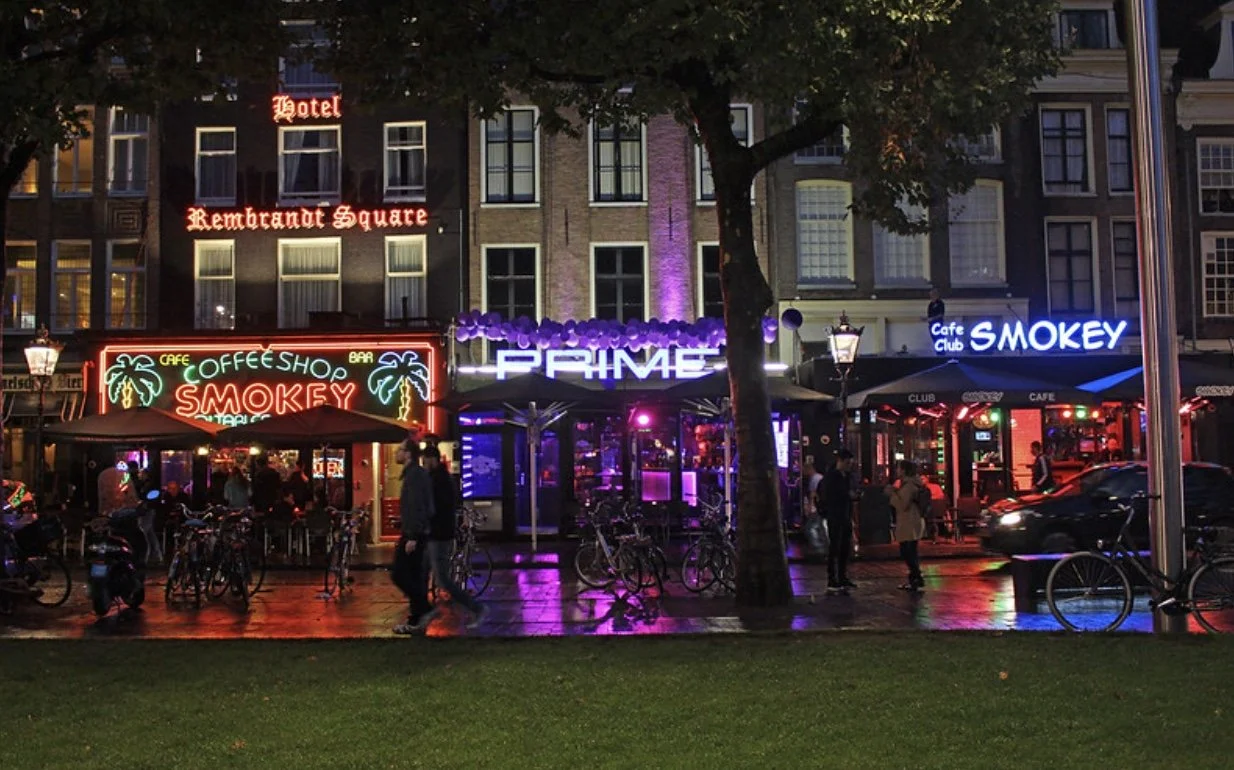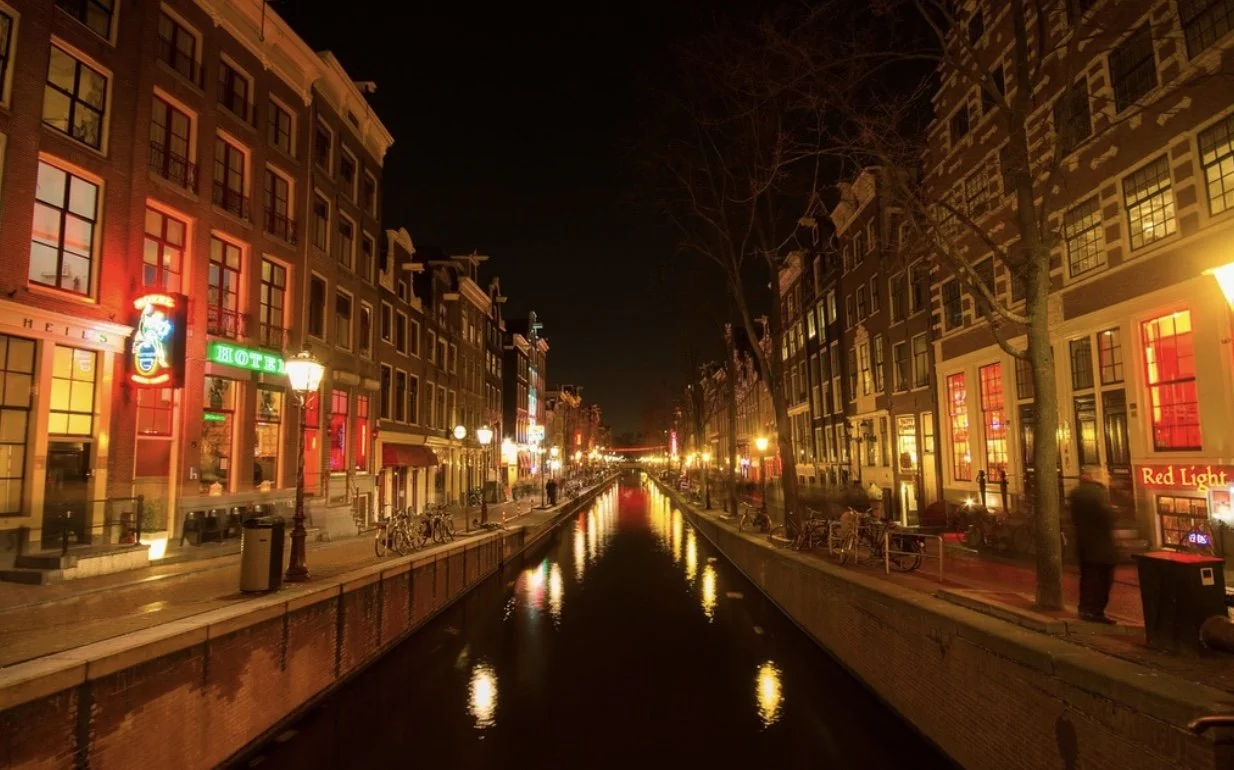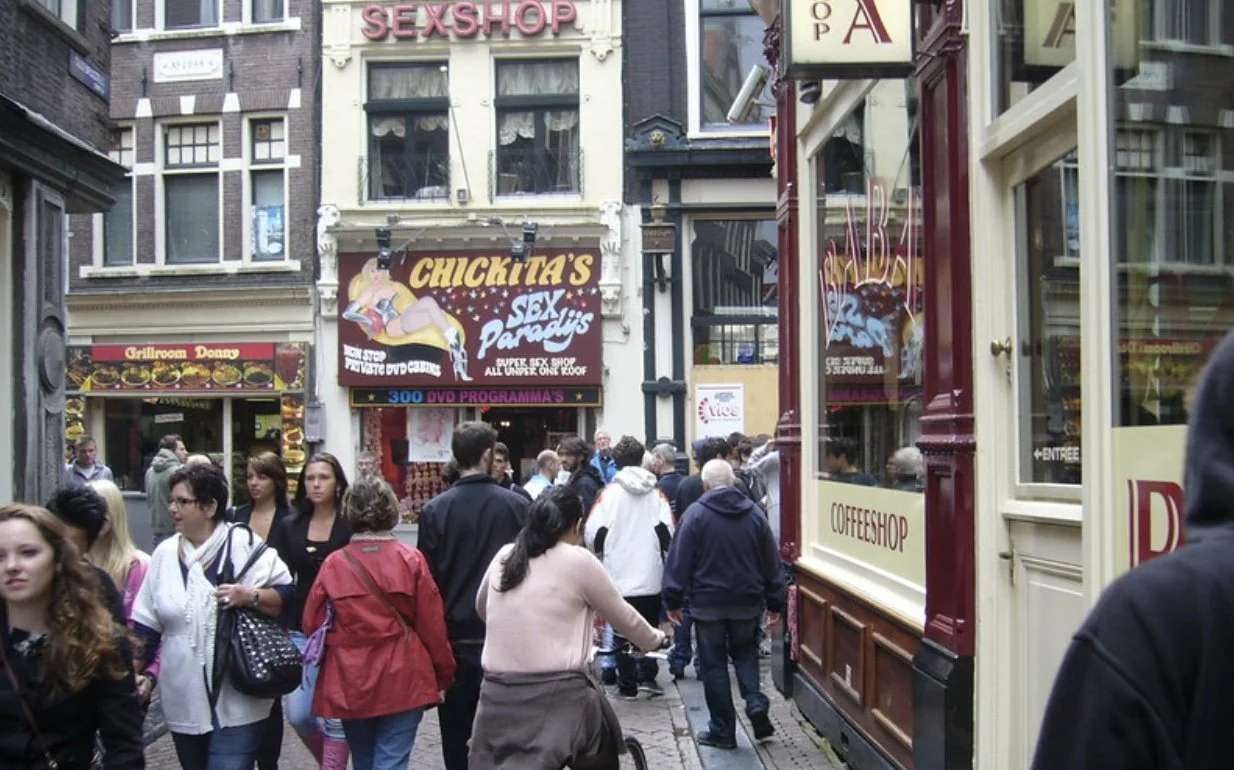Propositions for legislative shifts strive for balance between tourism, public safety and the well-being of sex workers.
Red Light District Canal Street View. Alejandro Forero Cuervo. CC BY 2.0
For decades Amsterdam has been inundated by rowdy crowds of eager sightseeing tourists and a hotspot for visitors craving a subversive experience. The Netherlands’ progressive capital has long had a uniquely tolerant approach to often prohibited substances such as marijuana and psilocybin as well as toward the legalization of sex work. While the city openly celebrates this unique facet of its culture, the Dutch government has been forced to grapple with an influx of unruly visitors and an increasingly polluted, noisy, and at times unsafe Red Light district.
Amsterdam Smoke Shops. Travelmag.com. CC BY 2.0
In response to the district’s increasingly obstreperous environment, the city sought to address local residents’ noise and substance abuse concerns by proposing new regulations this past spring. The city has insisted on earlier closing times for bars (2 a.m., with no entry after 1 a.m.), stopped sex workers from working after 3 a.m., and banned the use of marijuana, alcohol, and other drugs in the streets. In response to the city’s regulatory shifts entrepreneurs, business owners and bartenders have been outspoken in frustration against the new policies, claiming little has changed in regards to the safety and cleanliness of the area. Sex workers have also voiced complaints over the restriction placed on the time they are allowed to work, expressing concern that the reduced hours have put them under financial pressure. This destitution can force them to accept clients they would normally reject.
Canal View Red Light District. Pixabay.com. CC BY 1.0
To further alleviate the pressure on the Red Light district, Amsterdam's authorities are considering a more drastic approach: creating a new location for legal sex work in a different neighborhood. This new location would be in a suburban area, and many are referring to the proposed locale as a “suburban erotic center” The goal of the move is to spread out the demand and ease the burden on the current district.
Since the legalization of sex work in the Netherlands in 2000 the country has been vigilant about enforcing a safe environment for individuals in the field, with regulations in place to combat human trafficking and other criminal behavior. For instance, sex work is illegal to practice in any space outside of a registered business (e.g. at home, in hotels, or in public spaces). In an attempt to protect and respect workers the city has banned tours of the Red Light district, required visitors to identify themselves with a valid form of ID, and set 21 as the minimum age for sex workers.
An Amsterdam Sex Shop. Rob Kievit. CC BY-SA 2.0
The city’s proposition of a new epicenter for sex work is still in its early phases, but it would dramatically change the scope of Amsterdam’s tourism. With fewer than a million residents, the city hosts roughly 20 million visitors annually, and tourism is one of the leading markets for local businesses. Any major change to laws regarding sex work and the overall functioning of the district will inevitably lead to shifts in the travel industry. The question remains as to whether the new area created to host erotic work will fix the industry’s systemic problems and help protect workers, and if it will solve the issues of over-tourism and noise pollution.
Avery Patterson
A rising junior at Vassar College in New York State, Avery is a Media Studies and French double major. She is an avid reader, writer, and traveler. She loves to immerse herself in new cultures and is an avid explorer who loves being in nature. She is passionate about climate and social justice and hopes to use her love of writing as a catalyst for positive change.





